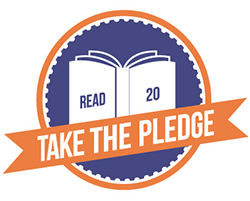Reading Tips: Overview
Parents and caregivers are a child’s first teacher. By reading with and talking to a child, you are ensuring that child’s brain development has a strong foundation for all future learning. What you do in your child’s earliest years matters greatly in their future school success.
Reading with your child is so much more than simply saying the words on the page. It should be a conversational dance back and forth between the reader and the child. While you’re reading with a child, enrich the reading experience in any number of ways.
Take a baby’s finger and pointing to an object in the story or ask your toddler to point to the object. Ask your preschooler to complete a rhyme within the story. Ask open ended questions about what’s taking place on the page or in the story or ask them how the story relates back to their life.
Create unique voices for the characters in the book as you can never be too silly, crazy or exaggerative when reading with your child. Using one or all of these suggestions will ensure the reading experience is enriched and enhanced for both you and your child.
Reading together with a child is an amazing way to bond together. Where is a child going to feel more loved than on your lap or next to you on the couch with your full undivided attention? As you bond, reading together increases his or her brain activity (American Academy of Pediatrics), giving a child a strong literacy and language foundation. Language is universal and reading together develops children's literacy development, specifically in the areas of comprehension of words, language processing, and visual imagery.
Enhance the experience by talking about what’s on the pages such as the colors, the letters, the pictures, as well as talking about what’s taking place in the story. You can’t be too silly when reading with your child, the crazier and more exaggerated the voices, the better! Here is a great example of a great read aloud by Michael Rosen, author of “We’re Going on a Bear Hunt.”
Be sure to pick a comfortable, well-lit spot when you read together and make that special time a daily routine. Keep reading with your children as they grow older and can read on their own. Kids still enjoy that bonding time with you. As their reading skills mature, reading together looks different at every stage. What should always be constant is reading together every day.
Reading Tips: All Ages
Always read the title of a book as well as the name of the author and illustrator when you begin reading a book. Equally important is to discuss how a book is read from left to right, and the different parts of a book. Keep books in multiple areas where your kids can access them.
Choose books that interest your children. That’s the best way to get them excited about reading! And be sure and ask questions about what’s illustrated on the pages, what is happening in the story, and what your child thinks is going to happen next. Also, ask your child how they would change the story.
Whether these are questions you help your child answer or ones they are able to answer on their own, it is a great way to expand the reading together experience.

Read with your school-age child brochure
Reading Tips: Babies
Babies enjoy bright and bold books with contrasting illustrations. Board books, cloth, and bath books are especially good for babies because they put everything in their mouths. Singing the lines in a book is a great way to read with a baby.
Keep books in areas of your home where your baby can safely reach them. As your child reaches 6 months, they will love to help you turn the pages and lift the book over his or her head. Babies and young children learn through repetition, so don’t be afraid to read and reread the same book often.

Read with your baby/toddler brochure
Reading Tips: Toddlers
Toddlers love an active experience when reading. They love to lift flaps, scratch different textures, and find objects in the pictures. Books with rhyming, pattern and songs are ideal for toddlers. Have your toddler act like one of the characters in the story.
If your child won’t sit still for an entire book, that is okay! Toddlers usually have shorter attention spans than babies. Look for text that is short and simple. Read a few moments, several times a day when they are interested. You can also bring your child's activeness into the story by asking them to find a toy that is the same color/shape/object as something in the story.
Reading Tips: Preschoolers
When reading with your preschooler, choose books that provide opportunities for discussions between you and your child. Pretend and predict parts of the story. Preschoolers are able to sit and listen to longer stories.
Your preschooler is still building vocabulary and communication skills. Allow your preschooler to ask questions as well as answer your questions. It is a great time to connect parts of the story to things happening in your child's life.
Ask your child questions to demonstrate they understand the story. Who are the characters? Which one are you most like? Where did the story take place? Did you know that’s called the setting? What is taking place on this page? Would you do what the mouse did? Why not?

Read with your preschooler brochure
Reading Tips: From Our Partners
Family Education and Support Services:
Family Education and Support Services (FESS) has created great parenting support and classes for decades. In the last several months, FESS has been working to create remote resources so families can continue to receive support.


